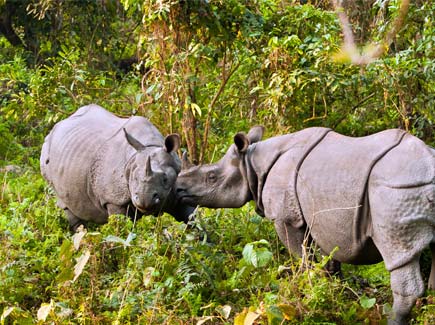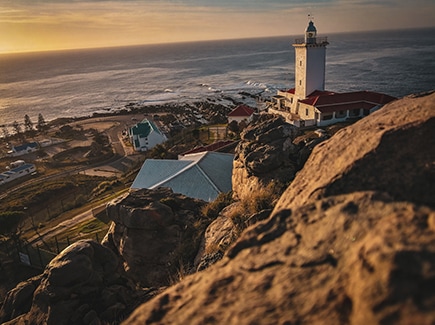While looking at the map of India, I always felt that the North East part of India is like an extended handshake to all those neighbouring countries in the east. Owing to the stark resemblance in terms of facial features, culture and traditions of people living in the North East part of India with those living in other East Asian countries we somehow get the feeling that they are different from other Indians. But it is this very kind of distinction which adds to the beautiful diversity of our country, it is unique. These north eastern states are collectively known as ‘the seven sisters’. On looking at these states huddled up against each other all of us can naturally believe that the title given to them collectively is very apt for them.
In the year 1947 when India got independence from the British, there existed only 3 states in the north east namely Assam, Manipur and Tripura. Assam was the largest state amongst them. However in the course of time Assam was fragmented into a number of new states such as Nagaland & Meghalaya in the years 1963 & 1972 respectively. Arunachal Pradesh & Mizoram were declared as states under the governance of the central government of India. Then in 1987 they were declared as independent states. In 1972 a renowned journalist from Tripura, Jyotiprasad Saikiya while speaking on a radio broadcast coined the title ‘Seven Sisters’ and it has become popular ever since then. On a geographical aspect this part has broken off from the Indian mainland with the only connecting feature being the ‘Siliguri Corridor’ which is also comically referred to as ‘Chicken Neck’. Assam is the gateway to all these 7 states. Geographically these states are bound very tightly with each other, mostly the same rivers are shared by all these states. The most striking feature of these states is their diversity in terms of communities such as Assamese, Bhutia, Bodo, Chakma, Gora, Mizo, Naga, Tripuri, Limbu etc. There exist over 220 types of communities in this region. This has led to a spurt of different languages too with Assamese being the principle one & a few other being Vaar, Khasi, Jaitina, Ahom, Bodo, Garo, Angami, Misimi, Mizo, Chakma, Lepcha etc. In totality over 215 languages thrive here. The region is mainly mountainous owing to the Himalayan ranges & the Khasi-Garo-Naaga-Patkai hills and is nourished wholesomely by the rivers like Brahmaputra, Barak, Difu and many other rivers originating in Meghalaya, as a result of which there is no dearth of vegetation. So certainly in terms of biodiversity, the North East is considered as the torch bearer. From Alpine forests to tropical deciduous forests, this region consists of all kinds of jungles. It is also home to famous national parks such as Kaziranga, Manas and Naamdafa. On account of different communities here, a number of festival are celebrated in this region. As a result of which the people here are almost always in a festive & jovial mood. Any person can get easily attracted to this region by just getting to know what it has to offer from a tourism perspective and hence by taking into consideration the tremendous demand we at Veena World have chalked out an awesome tour to the North East for the year 2015 & like always we have given you 2 options- the 1st being a 10 day tour and the 2nd being an 18 day tour. The 10 day tour comprises of visits to all the important tourist spots in Assam, Meghalaya & Arunachal Pradesh. The 18 day tour is a comprehensive tour comprising of visits to the states of Assam, Meghalaya, Arunachal Pradesh, Mizoram, Tripura, Manipur and Nagaland. From amongst these 7 states, we all seem to be most familiar with Assam in terms of factual knowledge. In the Era of the Mahabharata, Assam was known as Kaamrup and before that era it was known as Praagjyotishpur which a kingdom ruled by Narkasur who was ultimately laid to rest by Shri Krishna. During the British rule this region caught the fancy of the ‘English’ man who relished the tea produced here and which ultimately led to a number of tea plantations to thrive in full force.55% of the India’s tea production comes from Assam’s farms. The economics of Assam rests on another commodity other than tea and that is oil. From the total oil produced in India, a majority of it comes from Assam. The name ‘Assam’ is derived from the one horned rhinoceros. The Kaziranga National Park has found its way into the UNESCO’s list of world heritage sites. It is quite an experience to watch the rhinos and the hog deer prance through a dense aggregation of tall grass blades in the Kaziranga National Park while you are seated on the back of an elephant. Administratively even though Dispur is the official capital of Assam, Gohti is the religious, cultural & financial capital of Assam. The Kaamkhya temple in Gohti is as important to the patriots all over India as it is for those in Assam. It is one of the 51 ‘shaktipeethas’ spread all across India.
Shillong, which once was the capital of Assam during the British rule, is now the capital of Meghalaya. Meghalaya is truly as per its name which is derived from the Sanskrit words -megha + aalay, which means the home of the clouds. Shillong makes the Englishman reminiscent of Scotland and is often referred to as the ‘Scotland of the East’. School students are well aware of a specific place in this region and that is Cherapunji which was the place where the highest rainfall was recorded in India in the past. However even though you may not get to witness the rain at Cherapunji, you get to experience awesome places such as Elephant falls, Mosmai caves & Seven Sisters falls on visiting Cherapunji. The Mosmai caves are harboured naturally in a limestone mountain and one can observe the stalactites and stalagmites inside and just marvel at this natural artistry.
Amongst these states although Nagaland is the smallest in size, its largeness is reflected by means of the number of communities which reside here, 16 to be precise. The uniting factor amongst all these communities is the English language and Christianity. It is said that the name ‘Nagaland’ is said to be derived from the Burmese language in which ‘naka’ means the one who wears jewellery on the ears. Kohima is the capital of Nagaland & its name is derived from the ‘Kevhi’ flowers, in other words a land where the ‘Kevhi’ flowers bloom. In the 2nd world war Kohima & Imphal was the place where Japan faced a blazing attack from India’s allies and Subhashchandra Bose’s Azad Hind Force and was thus not allowed to permeate into India. There is a huge cemetery here to commemorate this episode.
From the Seven Sisters, Mizoram is one such state which shares its boundary with Bangladesh & Myanmar. Mizoram is the 2nd least populated state in India.91% of the land here is covered by dense forests. The word Mizoram means people living in the mountains. The capital of Mizoram, Aizawl, is the biggest city here. This city has a local market called the ‘Bara Bazar’ which retails traditional outfits/clothes, vegetables & artistic items. Nowadays there is also a large influx of Chinese goods in this region.
Tripura is one such state from the Seven Sisters which proudly exhibits its Bengali background. Renowned music composer S. D. Burman was from the Tripura’s ruling household. Agartala is the capital of Tripura and is considered as the 2nd largest city after Gohti. The star attraction of Agartala is the Ujayanta Palace. Located on the banks of a small lake, this palatial area is spread across 800 acres. Gurudev Rabindranath Tagore had named this place himself. It is 2 storeys high and was a place where Tripura’s Vidhan Sabha was conducted post India’s independence. Today it is open to the general public as a museum.
Next amongst the Seven Sisters is Manipur. From the Mahabharata it is known that Arjun’s wife was Ulupi and she was originally from Manipur. The language spoken in Manipur is a like a combination of Tibetan and Burmese languages. It is known as Miteyilon. This language is written is different formats or styles. The Manipuri dance form is one of India’s prime dance forms which is said to have been inspired by Lord Shrikrishna’s raasleela. Today Manipur is world famous owing to the laurels of the woman boxing champion-Mary Kom. Imphal is Manipur’s capital which consists of an important attraction known as Shri. Govindji Mandir. This ancient temple possesses idols of Balram, Subhadra and Jagannath which are worshipped. Close to Imphal is the Loktak reservoir, which is considered as a mini sea itself. This is, in fact, the largest fresh water reservoir in the North East. From amongst the seven sisters Arunachal Pradesh, as the name suggests, is truly the land of the rising sun. As per the Kalika Puran, it is in this region where the Prabhu Mountain was located, a place where Parshuram and Ved Vyas had done rigorous penance. The British referred to this place as Nefa-North East Frontier Agency. Lal Bahadur Shastri gave Arunachal Pradesh its name. This state is mountainous owing to the expanse of the Himalayas from the North to the South. Tawang is a village in Arunachal Pradesh which is at a height of approximately 10,000 feet. The prime attraction in Tawang is its monastery. It was built in the year 1681 and the 6th Dalai Lama was born here. This monastery is considered as the biggest monastery outside Lhasa. Encompassed by a wall measuring 690 mt in height this monastery has more than 55 buildings.
These seven sisters possess so many secrets and so many attractions! Owing to the space constraints I tried my best to make it as concise as possible but I must admit that i am truly exhausted writing about these seven sisters. So last but not the least, if you wish to experience this unique region of surprises and rich diversity then tag along with us since we at Veena World have chalked out a great tour for all of you.











































Post your Comment
Please let us know your thoughts on this story by leaving a comment.